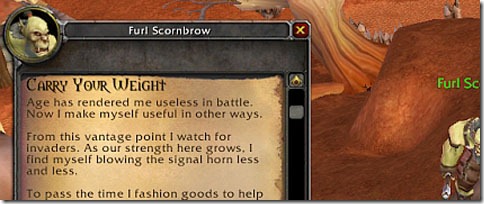Atlas.
In Greek mythology, he was a Titan who was doomed to bear the weight of the world on his shoulders.
Actually, maybe it was the heavens (or sky) to be more precise. After all, he was with team Titans and they lost against team Olympia.
My knowledge of Greek is a little rusty.
The weight of the world
When you’re the guild leader, every action is examined.
Every decision is second guessed.
Every intent, thought, and comment is placed under a microscope. I still maintain that anyone who wants to be a guild leader is insane. It’s even worse when you’re a blogger. I can’t even explain that one. I take pride in my team. Everyone that’s ever played under the Conquest banner, I’ve wanted nothing less than the best for them (even if it wasn’t the guild).
My responsibilities have steadily lessened as I’ve delegated what I could delegate. I’ve always thought that the key to effective management is to give your officers generalized goals and empower them with the necessary authority to do it.
In other words, tell them what they need to do and get out of their way.
You are your own greatest critic. Any guild leader is going to have that inner voice inside of them that doubts their skills and abilities. Despite the fact that I banish those thoughts during raids, the idle mind continues to wander. I can’t help but wonder if good is good enough. And what do you do if it isn’t? I’d like to think that guild leaders mean well and have good intentions. But here’s the thing about intentions:
Intentions aren’t going to get me good grades.
Intentions won’t help me meet deadlines.
Intentions won’t help me pick up chicks at a bar (LFM Wingman).
But all that stress? It does get to people. I’ve watched slowly as guilds ahead of and below Conquest gradually crumbled and fell one by one. Reasons include things from attendance to epic drama to simple lost interest. And those GMs? I guess they just couldn’t hold it together any longer and just said to themselves forget it.
There have been moments in my WoW career where I’ve considered retiring. Maybe move to the interior. Perhaps by a river. Build a log cabin. But what the heck would I do though?
Go fishing in the river? Maybe grow a garden? Sit on a patio drinking wine? I haven’t even acquired the taste of wine.
So here’s a question for the retired GMs out there
What did it for you? At what point did you call it quits? what happened to your guild?
I have no plans to retire right now. Conquest has something like over 200 members. Those poor saps are still stuck with me.
